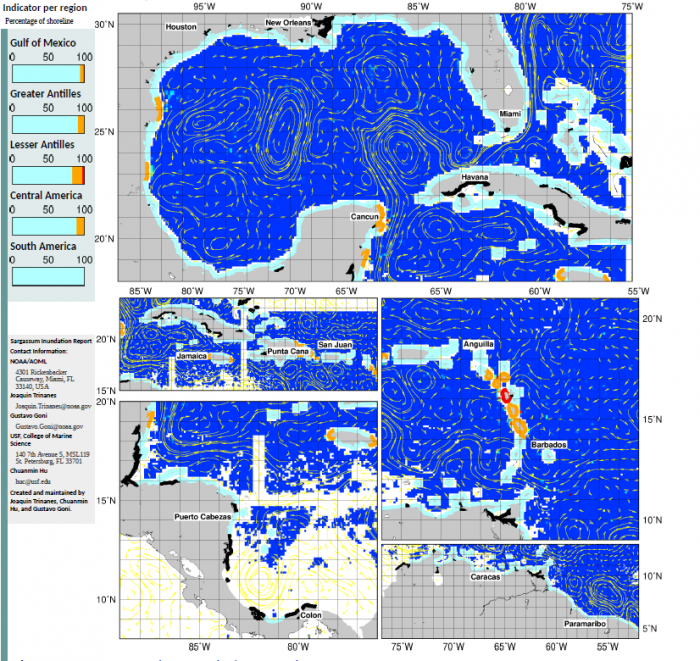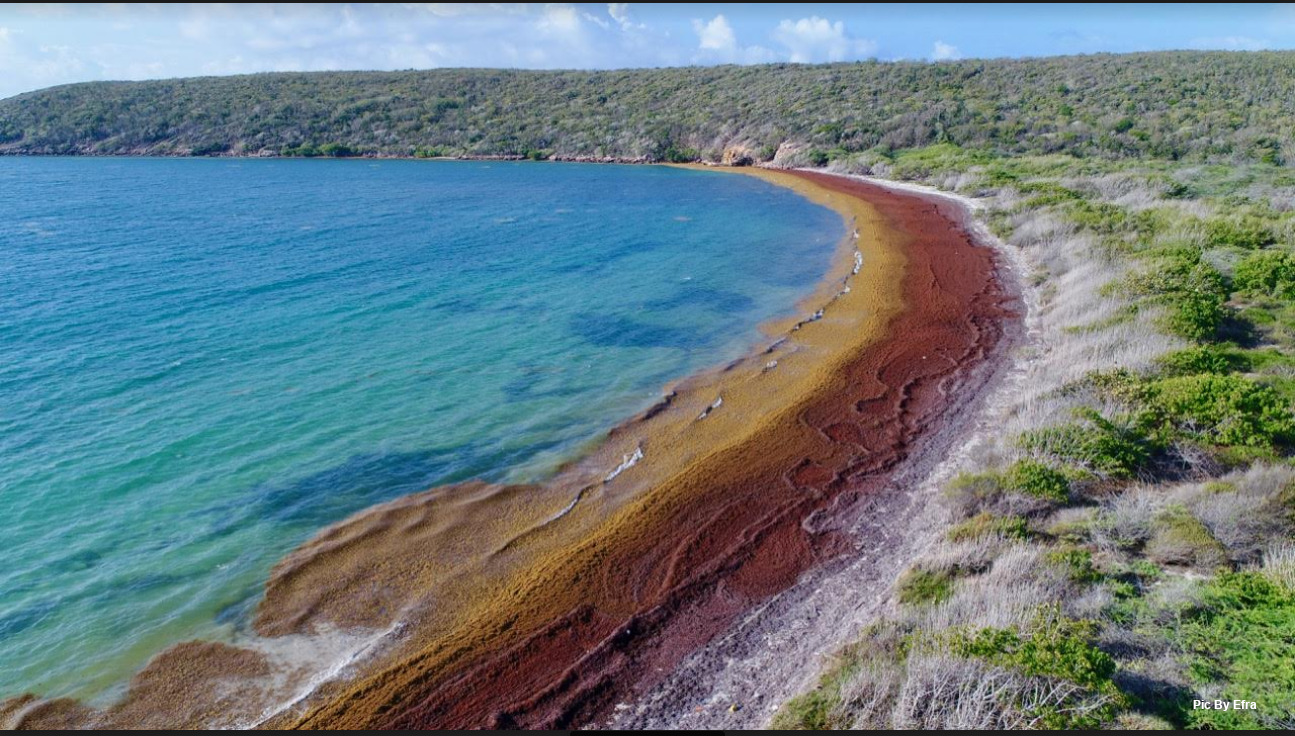Sargassum is a brown algae that provides refuge, food, and breeding grounds for multiple species of crabs, fishes, sea turtles, among other species. These algae can travel long distances because it has pneumatocysts (gas-filled structures) that make it stay at the ocean surface and be transported by wind and currents. Although Sargassum has been declared an essential fish habitat by the South Atlantic Fishery Management Council, too much of a good thing can also result in opposite effects.
Since 2011, the Caribbean has faced great challenges when it comes to Sargassum management. In fact, Sargassum blooms have caused significant environmental and economic impacts in the Caribbean. To effectively manage this situation, managers and the tourism industry require scientific information that allows them to know in advance, where these blooms are heading, so they can plan accordingly. In order to address these needs, the Atlantic Oceanographic and Meteorological Laboratory (NOAA/AOML), NOAA Coast Watch/Ocean Watch, and University of Florida (USF) has been working in an experimental Sargassum Inundation Reports (SIR). The SIR provides an overview of the risk of sargassum coastal inundation in the Caribbean and Gulf of Mexico regions. This tool classifies risk in three categories, hi, medium, or low. Over the past few weeks, high-risk coasts have already begun to show evidence of the arrival of sargassum, and Puerto Rico is no exception. Certainly, in May CARICOOS was able to document the arrival of sargassum on the southwest coast, which coincides with SIR projections. For the next few months, CARICOOS will continue documenting more events as they occur.

Experimental Weekly Sargassum Inundation Report (SIR v1.2)
By the National Oceanic and Atmospheric Administration (NOAA), and the University of South Florida (USF)
Another excellent source of information about Sargassum blooms in the region is issued by the Optical Oceanography Laboratory at USF. The monthly “Outlook of 2020 Sargassum blooms in the Caribbean Sea” (SO) provides a general outlook of current bloom conditions and future bloom probability for the Caribbean Sea. It includes satellite imagery from previous years as a frame for comparison.
Besides sharing SIR reports and the SO outlooks on its webpage, CARICOOS is studying the impact of Sargassum inundation on coastal ecosystems, an initial step towards providing coastal resource managers and partner entities with decision-supporting information. In addition, CARICOOS and partners are developing a Sargassum beaching forecast with the goal of predicting, with reasonable accuracy, the time and magnitude of Sargassum inundation events which may impact beaches and other coastal ecosystems.
For the SIR reports, go to: https://www.aoml.noaa.gov/phod/sargassum_inundation_report/#
For the SO outlooks please visit: https://optics.marine.usf.edu/projects/saws.html



